The Past and Present of the Mamian Skirt

When it comes to cultural exchange and the borrowing of elements, we should maintain an open attitude while showing mutual respect. In 2022, the renowned French fashion and consumer brand Dior launched a black mid-length skirt that closely resembled the mamian skirt. However, in the product description, Dior emphasized that the skirt featured its signature silhouette, without even a mention of the “mamian skirt.” So, what exactly is the mamian skirt? Why has it caused such a big stir? Today, let’s explore the past and present of the mamian skirt together!
I. The Song Dynasty: The Origins of the Mamian Skirt
The mamian skirt in China was mainly popular during the Ming and Qing dynasties. However, even before the Ming Dynasty, its cultural genes were already embedded in the long development of clothing.
There have been many speculations about the origin of the mamian skirt. For example, some people believe that the mamian skirt was first developed from the women’s clothing of the Liao Dynasty. But upon investigation of the mural cultural relics from the Liao Dynasty, there is insufficient evidence.
So I suspect that the mamian skirt might have originated from the women’s clothing of the Song Dynasty. The pleated silk hanfu skirt unearthed from the tomb of Huang Sheng in the Southern Song Dynasty is shown below. Isn’t it beautiful? Hold on, there’s something even more beautiful.
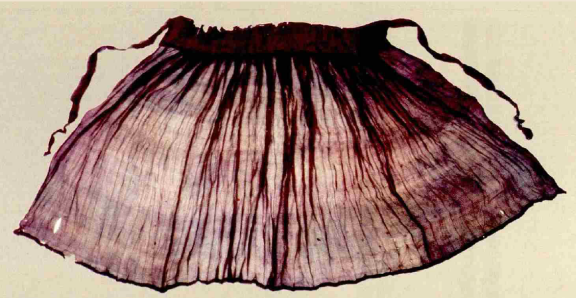
Girls in the Song Dynasty loved to dress up and invented many beautiful and convenient garments, among which was the xuanqun (a type of skirt). According to the records in “Jiang Lin Ji Za Zhi (《江邻几杂志》)” of the Song Dynasty, the xuanqun (旋裙) had a design with openings at the front and back of the skirt, which was convenient for riding a donkey. At first, it was worn by prostitutes, but later, scholars and literati also started to wear it.
Later, women in general discovered that because of the openings, this kind of skirt was not only convenient for doing labor but also for riding a donkey. So, they vied with each other to chase after this fashionable item. At first, some scholars and officials were deeply distressed and criticized the openings of the xuanqun, considering it immoral. However, they soon couldn’t resist the “truth of something being unexpectedly good” rule.
Not only did the women in their families put on this kind of skirt one after another, but even the literati themselves began to wear the xuanqun. In the tomb of Huang Sheng, a wealthy and beautiful young woman of the Song Dynasty, there were many exquisite and gorgeous xuanqun buried with her, which shows how popular this kind of skirt was.

II. The Ming Dynasty: The Stabilized Form and Structure
In the Ming Dynasty, the mamian skirt, which evolved from the xuanqun, developed its own unique and stable form and structure. The mamian skirt has the following characteristics:
Firstly, the skirt is composed of two large skirt panels that overlap and are sewn at the waist. Secondly, the mamian skirt generally has four skirt panels. There is usually no sewing between the skirt panels. When worn, it is wrapped around the waist and fixed with laces. The skirt panels cover each other to prevent revealing too much. Thirdly, except for the skirt waist part, fine pleats are made on both sides of the mamian skirt.
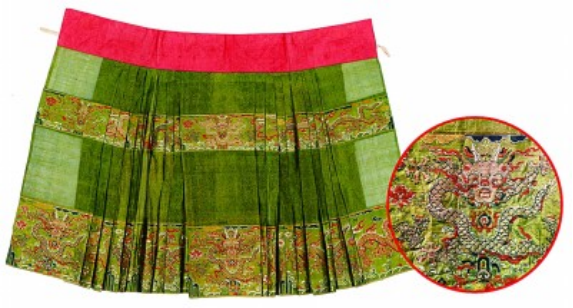
So, why is it called the “mamian skirt”? It all starts with the four broad skirt panels. “Mamian” was originally a term in the field of architecture, referring to the protruding tower-like structures on the city walls. The skirt panels of the mamian skirt are very similar to these square “mamian” structures, hence the name. 😗

The application of “mamian” in clothing was first recorded in The History of the Ming Imperial Palace. The book records: “The yesa robe (曳撒, a type of clothing) has an unbroken back hem, with pleats on both sides. The front hem is in two sections, and there are ‘mamian’ pleats that rise towards the two sides.”
It can be seen that during the Ming Dynasty, the “mamian” structure was widely popular in the clothing system. Not only did women love the mamian skirt, but also the yesa robe worn by men couldn’t do without the “mamian” pleats. In other words, as a native Chinese skirt style, the mamian skirt was born in a specific historical period and is closely related to the widespread use of “mamian” in clothing.
The mamian skirt also changed its appearance with the evolution of aesthetic trends in different eras. During the reign of Emperor Xianzong of the Ming Dynasty, the patterns on the mamian skirt became more and more complex and dazzling. There even appeared the golden “gold all over” mamian skirt. By the end of the Ming Dynasty, the elegant white mamian skirt became a sought-after item among women and was deeply loved by girls and wives.
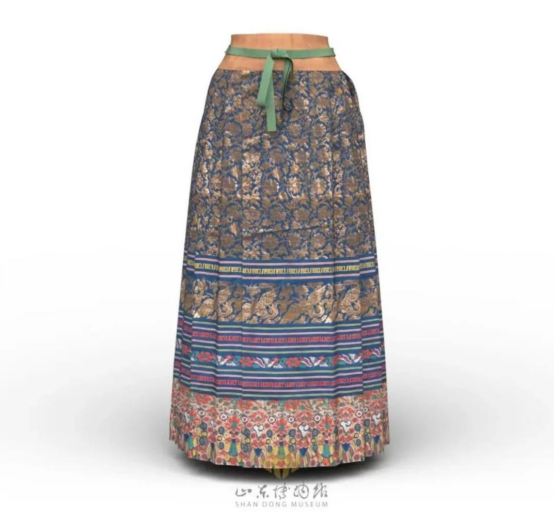
III. The Qing Dynasty: Aesthetic Evolution
After the fall of the Ming Dynasty, the rulers of the Qing Dynasty imposed strict restrictions on the Han people in terms of clothing and hairstyles. However, after intense resistance, a compromise was finally reached, allowing Han women to continue wearing Han-style clothing. Naturally, they could keep their beloved mamian skirts.
Hanfu in the Qing Dynasty placed more emphasis on the design of the skirt panels. The embroidery in the Qing Dynasty was of top-notch quality. The upper jackets in the Qing Dynasty were shorter, which allowed for more creative designs.
1. Phoenix-tail Mamian Skirt
The phoenix-tail mamian skirt is a special type of mamian skirt. Unlike ordinary skirts that cover the body, it is more like a decoration worn over the skirt. The structure of the phoenix-tail skirt draws inspiration from the mamian skirt and the pleated skirt, and the pleats on the sides of the skirt are replaced by colorful skirt straps.
The phoenix-tail skirt is made by arranging 8 to 12 colorful skirt straps at equal intervals and attaching them to the waist. Sometimes, the skirt straps are of different colors and embroidered with patterns for decoration.
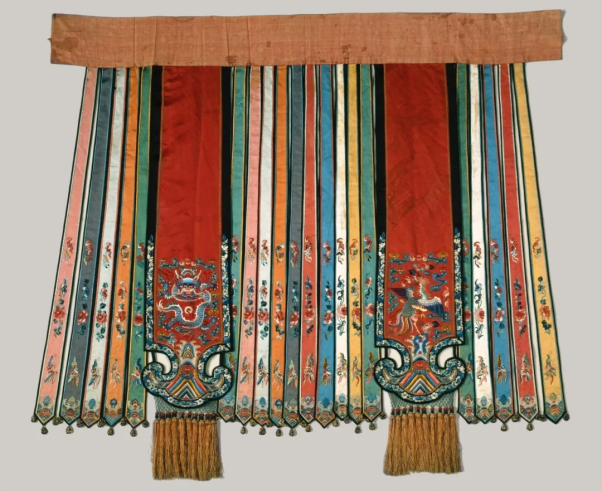
2. Fish-scale Pleated Skirt
During the Xianfeng and Shunzhi reigns of the Qing Dynasty, the fish-scale pleated skirt held a prominent position in the fashion world. Women in the Qing Dynasty liked to make fine pleats on the sides of the mamian skirt. Li Dou recorded in “Records of Yangzhou Pleasure Boats (《扬州画舫录》)”: “In recent times, whole pieces of satin are pleated with fine pleat lines, which are called ‘hundred folds’.” The appearance of the pleated skirt provided new ideas for the innovation of the mamian skirt. The fish-scale skirt is a style developed on the basis of the pleated mamian skirt. Skillful women connected the pleats on the sides of the skirt with silk threads. When walking, the skirt can be freely retracted and expanded. When the skirt spreads out, the pleats form a fish-scale-like grid pattern, which is how it got its name, the fish-scale skirt.
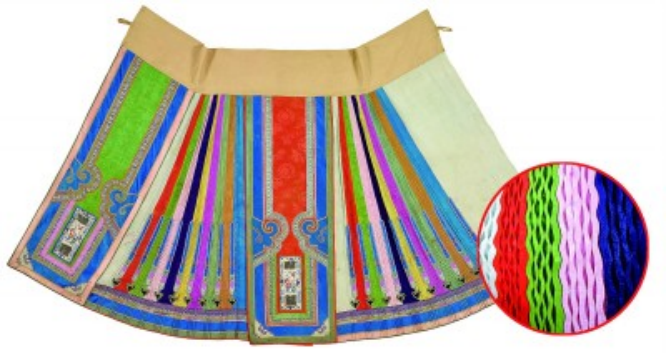
3. Langan Skirt
People’s preferences for dressing are similar to their preferences for food. After getting used to sumptuous delicacies, it’s inevitable to miss simple dishes like green vegetables and plain congee. Similarly, after getting used to complex and diverse pleated skirts, one can’t help but think of the advantages of skirts without pleats. Compared with the fish-scale skirt, the non-pleated langan (阑干) skirt exudes a sense of “understated luxury“. The langan skirt became popular at the end of the Qing Dynasty. This kind of skirt may or may not have pleats, and among the handed-down cultural relics, there are more non-pleated langan skirts. The non-pleated langan skirt is a type of mamian skirt. Instead of making pleats on the sides of the skirt, it uses several trapezoidal pieces of cloth to replace the side pleats of the mamian skirt, and trims are added between the cloth pieces and the skirt panels.
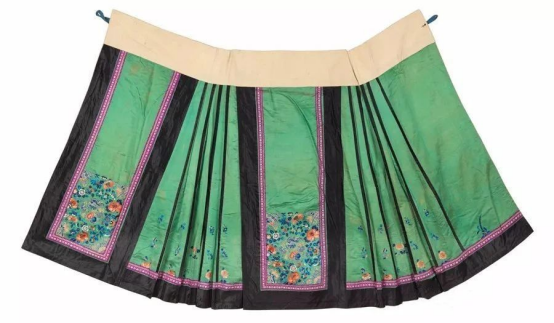
IV. The Republic of China: Communication and Integration
For a period of time after the fall of the Qing Dynasty, the old rules of dressing did not disappear. During the Republic of China, the mamian skirt remained an essential and popular item in the wardrobes of women who loved beauty. As time went on, it continued to develop and change, and integrated with Western elements from abroad, demonstrating the superb innovative ability and handicraft skills of Chinese women.

The aoqun (袄裙, a type of traditional Chinese clothing consisting of an upper garment and a skirt) was still popular during the period of the Republic of China. Some progressive female students wore the improved version of the aoqun as they walked around in the world that was a blend of the old and the new at that time.
A large number of Western elements were added to the clothing during this period. The skirts worn by some female students adopted Western-style three-dimensional tailoring, but sometimes, elements of the mamian skirt were still retained to enhance the beauty of the clothing.
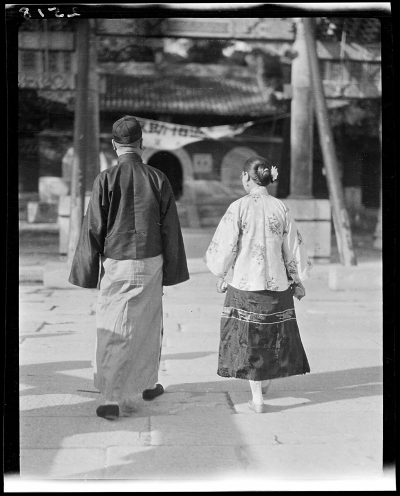
While Chinese people boldly incorporated Western clothing elements, Western designers were frequently amazed by the exquisite craftsmanship of Chinese clothing and began to absorb elements of Chinese clothing, among which was the style of the mamian skirt.
In the 1950s, in the magazine Fashion, there were women’s skirts designed with inspiration from the mamian skirt. In 1981, Princess Diana of the UK wore a mamian skirt at a dinner party. At that time, she paired a white shirt with a Qing-style red embroidered mamian skirt, which was truly stunning.
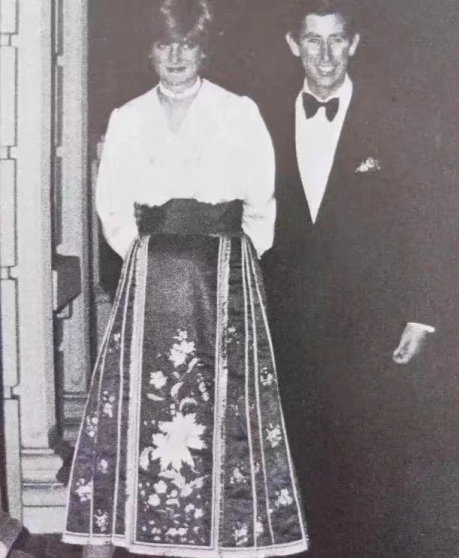
V. Modern Times: Development Dilemmas
When it came to 2022, at the autumn ready-to-wear fashion show held by Dior at Ewha Womans University in Seoul, South Korea on April 30, there were short uniform skirts that included elements of the mamian skirt. The black mid-length skirt of Dior that caused a great stir was extremely similar to the mamian skirt of the Ming Dynasty in China in terms of the way it was worn and the design of the skirt panels and pleats. It can be said that Chinese clothing represented by the mamian skirt provides important references for contemporary fashion design around the world.

Summary
After learning all this, which style of mamian skirt do you like best? The mamian skirt has evolved into such a diverse “family” today thanks to the efforts of designers and the love of the public. Cultural exchange and borrowing of elements are nothing new, and we hope the mamian skirt can showcase different charms in the hands of designers from various cultural backgrounds around the world. However, we also hope designers will respect the cultural significance behind the clothing. Finally, we hope the mamian skirt can go global and win recognition from consumers worldwide.
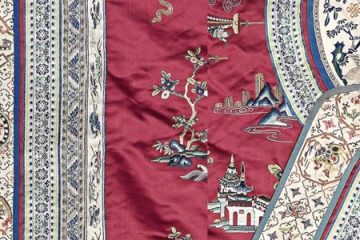
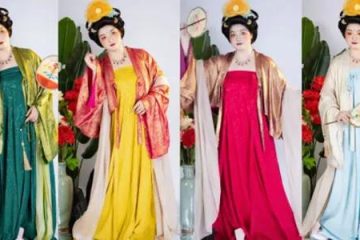
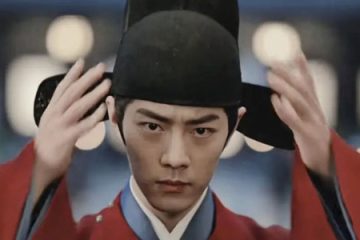
0 Comments